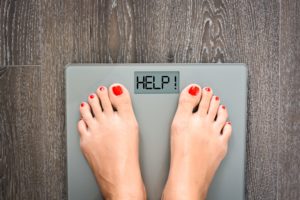We all know that any kind of activity or exercise increases the rate of our heartbeat. Our heart rate/pulse is measured in terms of beats per minute (bpm). But how many of us know what the ideal bpm of a person should be when one’s is exercising, when one’s doing a simple activity like walking or even when he/she’s just sitting idle?
Well, don’t worry because in this blog we’re going to try covering everything you need to know about heart rates and how it affects your body functions, especially when you exercise.
When it comes to your heart rate it shouldn’t be too fast, nor too slow. It can’t be too erratic either. Heart rhythm and pace is something you should not be thinking about because your heart beating is involuntary and each person’s heart beats at its own rhythm and pace depending on many factors.
What Is A Normal Heart Rate?
A normal heart rate is usually between 60 and 100 bpm. Slower than 60 bpm is bradycardia (slow heart) and faster than 100 is tachycardia (fast heart). Keep in mind that a healthy heart rate will vary depending on the situation.
How Can You Determine Your Heart Rate?
You can determine this by simply checking your pulse. The easiest spots to check your pulse are the front of your wrist or the side of your neck. Count the number of beats in 30 seconds and double that number to get your bpm.
Slow Heart Rate
Among healthy people, a slow heart rate may be due to:
– Being physically fit
– Sleep
– Even certain medications
It could even be a sign of a disease such as:
– Cardiac arrest
– Infections that cause severe fevers or sickness
– High levels of potassium in the blood
Fast Heart Rate
Healthy people can have a fast heart rate because:
– Exercise
– Nervousness or excitement
– Using a stimulant like caffeine or cocaine
– Pregnancy
Some diseases associated with a fast heart rate are:
– Infections that cause severe fevers or sickness
– Low levels of potassium
– Anemia
– Asthma or other respiratory diseases
– Certain medications
– Heart problems like cardiomyopathy (pumping function of the heart is reduced)
What About Heart Rate During Exercise?
Your heart rate can be used as a measure of exercise intensity. Rigorous exercise can raise your heart rate to 70% – 80% of your maximum heart rate. Now, how you can find your maximum heart rate is to subtract your age by 220. Take that number and multiply it by 0.7 to 0.8 to estimate your 70 – 80% range. For example, Age of the person is 25.
220 – 25 = 195
195 x 0.8 = 156 bpm
So, around 156 beats per minute should be the maximum heart rate of a healthy individual who is 25 years of age.
When Should You Worry About Your Heart Rate?
If you ever notice a minor irregularity like a skipped beat or an early beat there’s nothing to worry about, yet. This happens to everyone and if this happens in the absence of any symptoms, it’s not an indication of trouble. An abnormal rate or rhythm can occur in many situations like an exam, an ECG test and it can happen to healthy people who have no symptoms as well.
Symptoms of a slow heart rate include:
– fatigue
– dizziness or lightheadedness
Symptoms of a fast heart rate include:
– fatigue
– Dizziness or lightheadedness
– shortness of breath
– chest tightness or palpitations
If you ever feel these kinds of symptoms the best thing you can do is sit down and take a deep breath. And if symptoms tend to recur consult a doctor at the earliest.
Always keep in mind that it’s important to try notice the rhythm of your heartbeat and any irregularities associated with the same. That doesn’t mean you have to be conscious about it all the time. Your heart is like the engine and you’re the vehicle. To make sure you run smoothly it’s important to keep your heart in good condition by means of regular activity or exercise. Hope this was of help to you!






